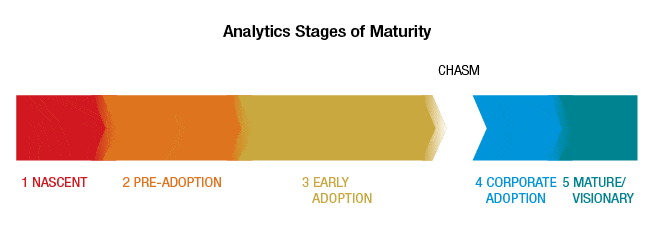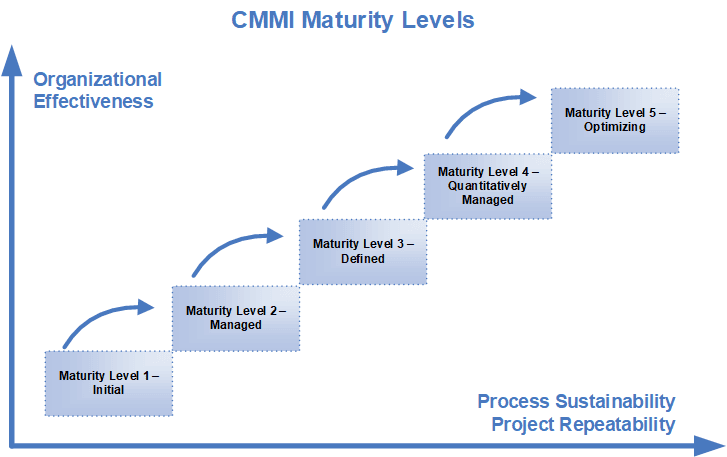The 5 Elite Levels of an Analytics Maturity Model
Are you looking to improve your business’s analytics strategy? Understanding the five stages of analytics maturity can help you quickly move from a novice to a strategic expert. Here, we will dive into analytics maturity models. We will discuss what they are, why they matter, and what benefits they bring.
You will also learn about the different types of models and what characteristics make a good one. However, the main focus of this article is on the five levels or stages of analytics maturity: Novice, Emerging, Operational, Tactical, and Strategic. By understanding these stages and where your business fits in, you can develop a roadmap for success and take your game to the next level.
Introduction
As data becomes increasingly essential in business, companies must develop their analytics maturity to make data-driven decisions confidently. The five levels of analytics maturity provide a framework for businesses to assess their capability level and identify improvement areas.
Moving from novice to strategic leader requires investment in technology, processes, and people. But, achieving a higher maturity level can lead to significant competitive advantages for businesses. Embracing data-driven decision-making empowers companies to stay ahead of the curve and improve their bottom line.
What is an Analytics Maturity Model?
Companies must clearly understand their analytic capabilities to succeed in today’s data-driven business world. An analytics maturity model provides a comprehensive framework that assesses an organization’s current stage of analytics maturity and guides its growth toward more sophisticated analytics capabilities.
By using this model, companies can identify gaps in their data strategy and focus on developing the necessary processes, technology, and talent to improve their decision-making. This section will explore the maturity stages and how they can help organizations make the most out of their data.
Benefits of an Analytics Maturity Model
Investing in an Analytics Maturity Model provides substantial benefits to businesses.
- It enables organizations to assess their capability and identify improvement gaps that lead to better alignment between business goals and data-driven initiatives, improved decision-making, and increased efficiency.
- Organizations can use an Analytics Maturity Model to prioritize their investments in analytics tools and resources.
- It helps organizations move from reactive reporting to the predictive model, which can ultimately drive business growth.
Therefore, investing in an Analytics Maturity Model is vital to achieving competitive advantages and staying ahead.
Types of Analytics Maturity Model
An Analytics Maturity Model is essential for businesses looking to improve their data capabilities and make informed and better decisions. Several analytics maturity models are available, each with unique characteristics and goals.

Source: Medium.com/Milind Desai
Gartner Analytics Maturity Model, for example, focuses on helping organizations build a robust data culture by asking a specific question at each level.

Source: TDWI.com
TDWI Analytics Maturity Model emphasizes assessing and improving data quality as you progress.

Source: Bi-insider.com
Carnegie Mellon CMMI Maturity Model provides a roadmap for organizations to align their data management practices with industry best practices.
Organizations can identify areas for improvement and develop a clear path toward better maturity by selecting the most appropriate model for their needs.
Characteristics of a Good Analytics Maturity Model
A good analytics maturity model should be flexible and adaptable to different industries and business types. It should clearly define each stage, guiding how to advance from one location to the next. Additionally, a good model should include metrics for measuring progress and identifying areas for improvement.
This will enable organizations to track their capabilities over time and make informed decisions that drive growth. Finally, a well-designed model is supported by industry research and best practices, along with feedback from businesses that have successfully implemented it. A good model can help organizations maximize the value of their data sources and achieve better decision-making processes by ensuring these key characteristics.
What are the five levels of the Data Analytics Maturity Model?
Companies can evaluate their procedures for gathering, analyzing, and making decisions regarding data by implementing the five stages of analytics maturity. In addition, this framework allows them to identify and address any areas of excellence or deficiency within their current processes.
The first level is a novice, where the norms are limited data usage and basic reporting.
Emerging, the second level, companies start to collect and analyze data but have not fully utilized it.
Operational, the third level, sees data-driven decision-making become a regular practice.
The fourth level is tactical, when advanced analytics tools are employed to gain deeper insights and optimize strategies.
Strategic is the highest level where data becomes integral to company culture driving overall business strategy.
Let’s talk more about each stage.
Level 1: Novice
Starting the analytics journey at the novice level can be daunting for businesses just beginning to recognize the importance of data. With limited data usage and basic reporting, companies often lack the skills and resources to make data-driven decisions. The focus is on collecting raw data rather than analyzing it to gain insights, which can hinder growth and limit opportunities for improvement.
To progress beyond this stage, businesses need to invest in building solid data infrastructure and developing analytical capabilities. By doing so, they can unlock the power of their data visualization and leverage it to drive growth and success.
Level 2: Emerging
As companies move into the emerging stage, they start to visualize the importance of data. However, they may still encounter obstacles in their journey toward becoming entirely data-driven. With growing awareness of the potential value that analytics can bring, businesses at this stage may be investing in new bi tools and automation and artificial intelligence (AI) technologies to help them collect and analyze historical data more effectively.
However, they also need to build a strong foundation for data governance using self-assessment and data science and ensure they have the right skills and capabilities to make the most of their visualization process and apply descriptive analytics appropriately to keep moving forward.
Level 3: Operational
At the operational stage, organizations have established data analytics practices and use the data pipeline to drive operational improvements. Diagnostic analytics insights are effectively used across the organization, emphasizing collaboration with the marketing team, stakeholders, data engineers, and data scientists.
In addition, automated reporting and real-time dashboards help monitor key performance indicators to create forecasts by leveraging those datasets. However, businesses must leverage predictive analytics, machine learning, and algorithms to gain deeper insights and drive proactive decision-making to advance to the next stage. By doing so, companies can unlock new revenue streams and stay ahead of their competition in a rapidly changing marketplace.
Level 4: Tactical
Organizations can leverage data analytics to optimize specific business areas in the tactical stage. They can measure performance using big data mining techniques and make informed decisions quickly and confidently using data-driven insights. This stage involves more advanced techniques, such as predictive modeling analysis and segmentation, making data governance crucial to ensure accuracy and consistency in reporting.
With the ability to adapt and respond quickly to changes in the market or industry, organizations at this stage are well-positioned to seize opportunities that arise and stay ahead of the competition.
Level 5: Strategic
At the strategic stage, analytics is not just a function but an integrated part of the organization’s DNA. With data-driven insights guiding long-term planning and enterprise-level initiatives, organizations can make informed decisions that lead to innovative solutions and competitive advantage. But the importance of leadership and culture cannot be overstated.
The success of prescriptive analytics initiatives at this level requires a top-down commitment to data-driven decision-making, focusing on building a culture that values and prioritizes insights over intuition or experience. Without this foundation, even the most cutting-edge technology will fail to deliver meaningful results to improve ROI.

Source: Financesonline.com
Frequently Asked Questions
Why should a company invest in its analytics program?
Investing in an analytics program can benefit a company in many ways. Businesses can identify areas of improvement and cost-saving opportunities by making data-driven decisions. It can also provide valuable insights into customer behavior and preferences.
In addition to these benefits, having improved capabilities can give a company a competitive advantage in the market by allowing them to make more informed decisions and stay ahead of industry trends with actionable insights. So overall, investment is wise for any company looking to improve its performance with business intelligence (BI) tools to stay ahead of the game.
What are the best practices for the analytics maturity model?
To achieve a high level of analytics maturity, it’s essential to:
- Identify your organization’s goals and align them with their efforts.
- Develop a strategic plan for implementation and measure progress regularly as they progress over the analytics maturity curve.
- Invest in the necessary tools, technology, and talent to execute your analytics strategy to improve your business outcomes.
How can a company progress from one stage of analytics maturity to the next?
A company must establish a clear business strategy and identify key performance indicators (KPIs) to find the best way to progress from one stage of the analytics maturity scale to the next. Next, they should apply data analysis tools to gain insights into their business processes and customer behavior.
As they progress, developing predictive and prescriptive analytics capabilities is essential. Finally, integrating it into all aspects of the business for continuous improvement is crucial for achieving long-term success in today’s data-driven world.
Foster a data-driven culture by promoting collaboration and communication between departments. This will help ensure everyone is on the same page about what the data means and how it can be used to drive business decisions. Following these best practices can improve your organization’s analytics maturity and use your data better.
Conclusion
In conclusion, an analytics maturity model can help businesses identify where they stand regarding adopting it and what they need to do to improve their capabilities. In addition, it helps them identify the gaps in their current strategy and provides a roadmap for achieving their business objectives through data-driven decision-making.
The five levels of analytics maturity are Novice, Emerging, Operational, Tactical, and Strategic. Each stage represents a different level of sophistication in data management, analysis, and use. To learn more about developing a successful analytics strategy that aligns with your business goals, check out our comprehensive guide to data analytics.
